Emmenanthe penduliflora, Whisperingbells
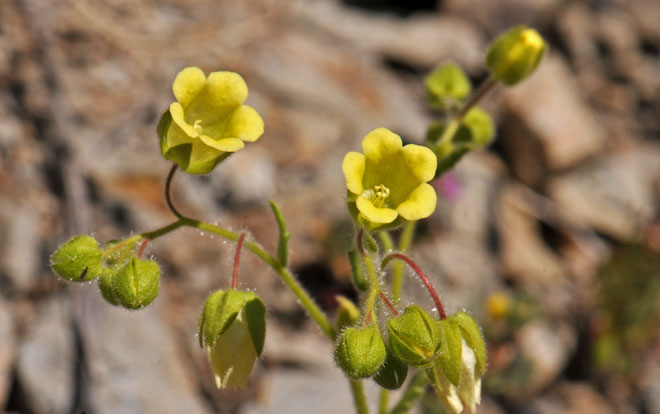
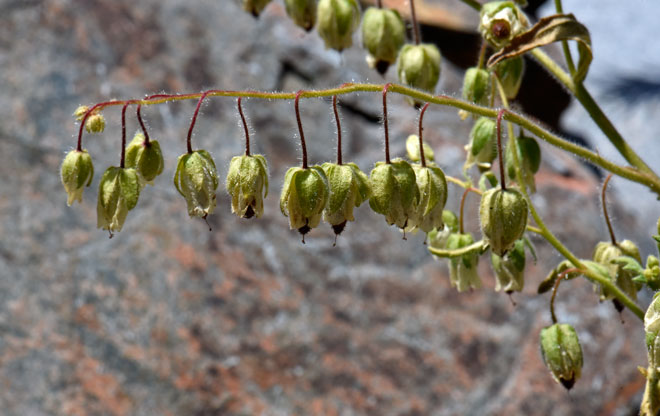
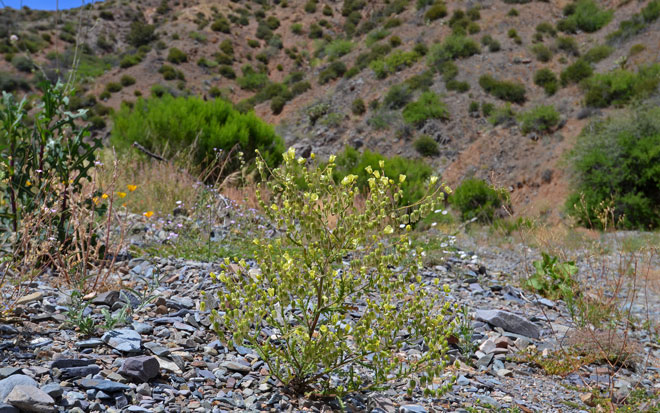
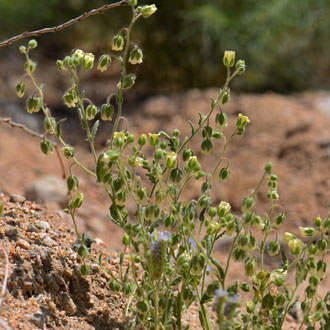
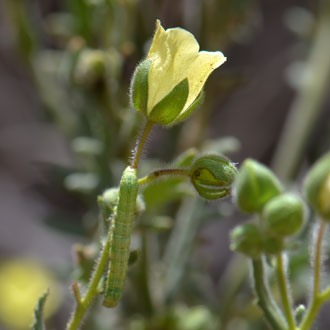
Scientific Name: Emmenanthe penduliflora
Common Name: Whisperingbells
Also Called: Whispering Bells, Yellow Whispering Bells (Spanish: Campanita de Suspiro)
Family: Hydrophyllaceae (Boraginaceae, Hydrophylloideae), the Waterleaf Family
Synonyms: ()
Status: Native.
Duration: Annual
Size: Up to 30 inches or more.
Growth Form: Forb/herb; stems fleshy, erect, multiple branches, glandular, sticky hairs, plants with a medicinal odor.
Leaves: Green; alternate, new growth basal, cauline leaves with short petioles or sessile, slightly clasping, sharply dentate or pinnate.
Flower Color: Yellow; flowers bell-shaped, hanging or pendulous on terminal inflorescence, corolla persisting around fruit which is also glandular.
Flowering Season:
March to May.
Elevation: 4,000 or lower.
Habitat Preferences: Along streams and dry washes, slopes, disturbed natural areas and often under protective bushes.
Recorded Range: Whisperingbells are found in the United States in; AZ, CA, NV and UT and in Baja California, Mexico. Populations are most abundant in much of California, central and southeast Nevada, extreme southwest Utah and central, southern and northwestern Arizona.
North America & US County Distribution Map for Emmenanthe penduliflora.
U.S. Weed Information: No information available.
Invasive/Noxious Weed Information: No information available.
Wetland Indicator: No information available.
Threatened/Endangered Information: No information available.
Genus Information: 1 species in Emmenanthe (monotypic genus).
2 varieties in Emmenanthe penduliflora;
Emmenanthe penduliflora var. penduliflora, Whisperingbells (see range above),
Emmenanthe penduliflora var. rosea, Whisperingbells (found in California only).
Comments: Whisperingbells is a popular and semi-common spring and early summer wildflower.

